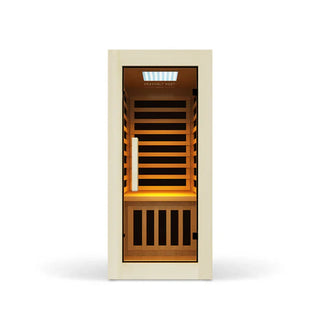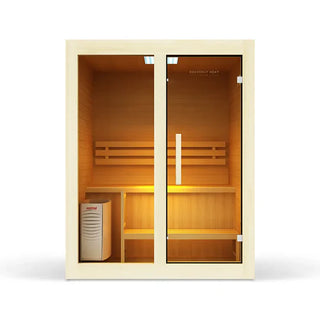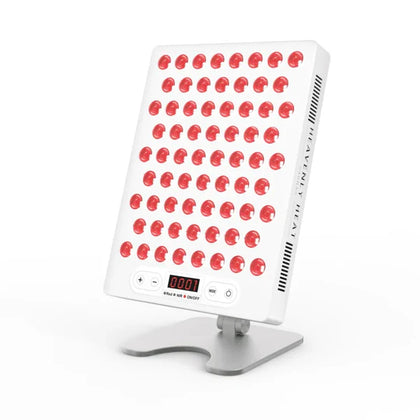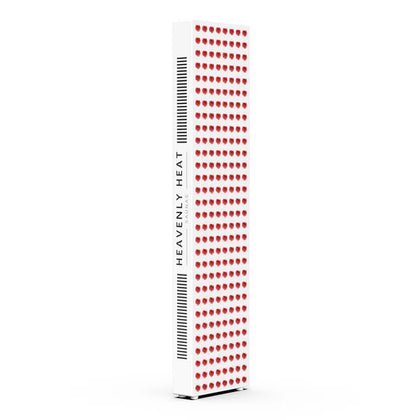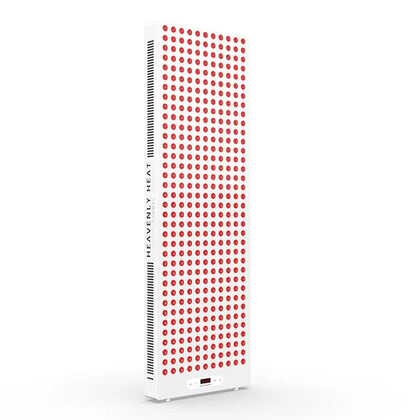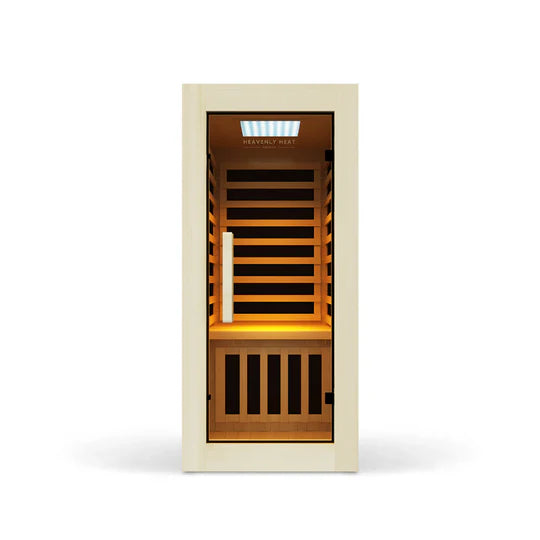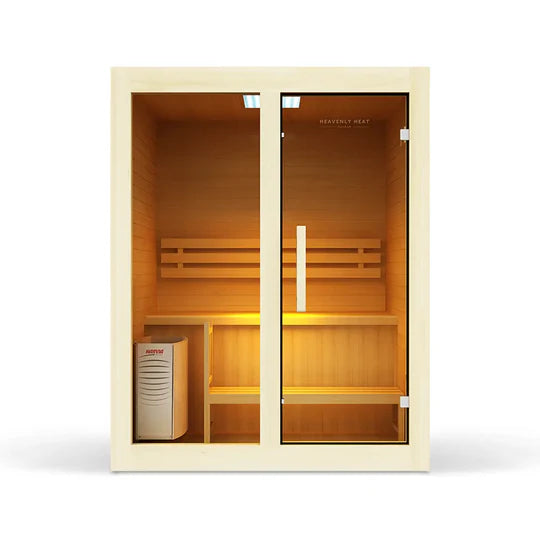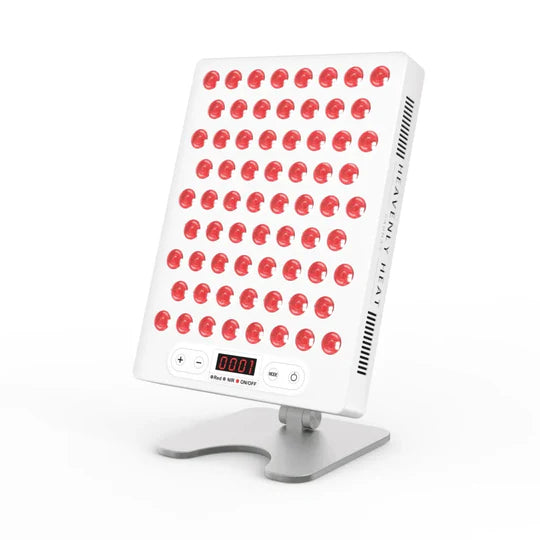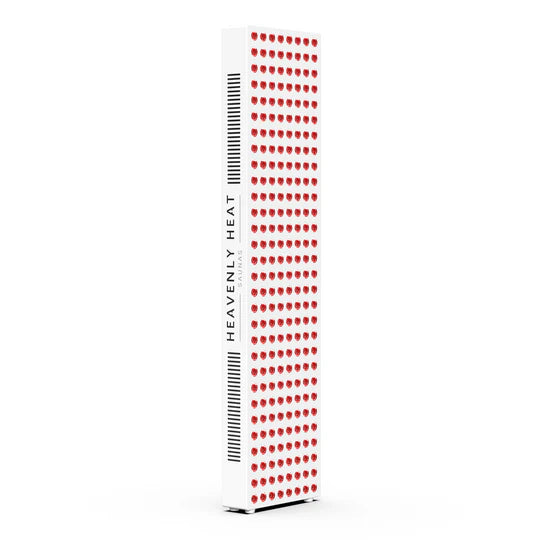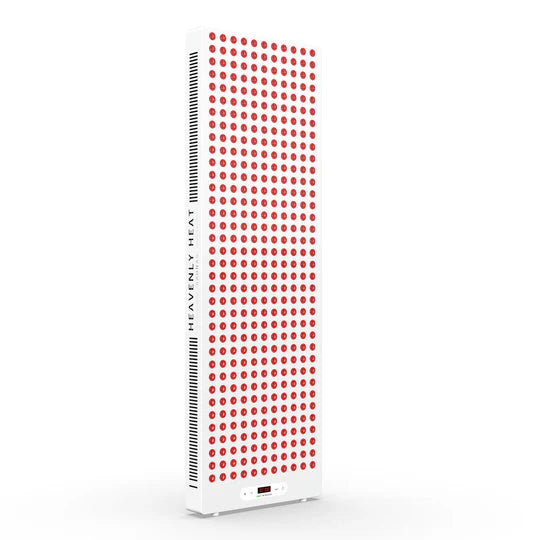Is red light therapy safe for dark skin?

Dark spots, uneven tone, and stubborn pigmentation, these are common symptoms dark-skinned individuals face when dealing with skin discoloration.
But here's the issue: many therapies don’t consider how melanin-rich skin reacts differently, often making things worse.
Ignoring this can lead to burns, scarring, or hyperpigmentation. So, is red light therapy actually safe for dark skin? Let’s uncover the truth.
Table of contents
Key Takeaways
-
Start with Shorter Sessions: Begin with 5–10 minute sessions to avoid overstimulation and irritation on dark skin.
-
Choose the Right Wavelength: Use devices with wavelengths between 630–850nm for safe and effective results on melanin-rich skin.
-
Monitor Your Skin: Watch for pigmentation changes and adjust intensity or frequency if any irritation occurs.
-
Be Patient for Results: Red light therapy can take 3–8 weeks to show visible improvements on dark skin.
-
Hydrate and Protect After Treatment: Apply moisturizer and sunscreen to keep your skin hydrated and shielded from UV damage post-therapy.

The Science Behind Red Light Therapy and Dark Skin
Red light therapy is getting popular for skin health, but how it affects darker skin tones isn’t always clear.
A 2019 study from the Journal of Biophotonics looked into this and found something important. Researchers tested red light on people with all skin types.
They discovered that darker skin can be more sensitive to the light. Some people with dark skin had mild side effects like redness or darker patches, but these didn’t last long.
The good news? The treatment was safe when used at the right levels, up to 320 J/cm² for darker skin and 480 J/cm² for lighter skin.
This shows that red light therapy can work for everyone, but people with dark skin might need lower doses to avoid irritation. If you're thinking about trying it, knowing how your skin reacts really matters.
Why the Safety of Red Light Therapy for Dark Skin Deserves Attention?
Risk of Hyperpigmentation or Uneven Skin Tone
- Dark Skin is More Sensitive to Light Therapy: Dark skin contains more melanin, which can make it more sensitive to red light therapy. If the light is too intense or used for too long, it may cause reactions like hyperpigmentation.
- Red Light Therapy Can Cause Uneven Skin Tone: When melanin production is triggered by intense light, it can lead to darker spots or uneven pigmentation. This is a common issue for people with darker skin tones.
- Start Slow to Avoid Hyperpigmentation: To reduce the risk of hyperpigmentation, begin with shorter therapy sessions at lower intensities. Gradually increasing exposure helps your skin adjust and prevents potential dark spots.
- Studies Show Dark Skin May Have Adverse Reactions: Research suggests that while red light therapy is generally safe, darker skin may experience mild side effects like redness or dark patches when exposed to high light intensities.
- Stay Within Safe Limits to Prevent Skin Damage: By keeping the intensity and duration of red light therapy within safe limits, the risk of serious damage or discoloration is minimal. Monitoring your skin’s response is key to avoiding adverse reactions.
Lack of Representation in Research
- Lack of Representation in Research on Darker Skin Tones: Most studies on red light therapy primarily focus on lighter skin tones, which creates a significant gap in understanding how the treatment impacts those with darker skin.
- Potential Side Effects Unnoticed for Darker Skin: Due to the lack of representation in clinical trials, potential side effects of red light therapy may go unreported or unnoticed, especially for individuals with deeper skin tones.
- Skin Classification System and Its Importance for Safety: The skin type classification system, originally created to guide UV light treatment, is also essential for determining safe red light therapy parameters for various skin tones.
- Need for Inclusive Research and Skincare Guidelines: There is an urgent need for more diverse research to develop skincare guidelines that ensure the safety and effectiveness of red light therapy for people with darker skin.
Different Heat Sensitivity
- Darker Skin Is More Sensitive to Heat: Darker skin tends to be more sensitive to the warmth produced by red light therapy. Although red light therapy isn't supposed to be hot, some devices can emit heat that builds up over time, potentially causing irritation.
- Pulsed Light Therapy Helps Prevent Heat Buildup: Pulsed light therapy, which uses short bursts of light, can be safer for dark skin than continuous light. It gives the skin a break between pulses, helping prevent heat buildup and allowing the skin to cool down.
- Excessive Heat Can Cause Skin Damage: If red light therapy is used for too long or at high temperatures, the heat can irritate or even damage the skin. This is especially true for people with darker skin, who may be more sensitive to heat.
- Adjustable Settings Help Prevent Overheating: To avoid overheating, it’s crucial to use a device with adjustable settings. Limiting the exposure time and monitoring the heat levels will help ensure a safe experience.
- Start Slowly to Avoid Discomfort: Starting with shorter sessions and gradually increasing exposure time is the safest approach. This gives your skin time to adjust to the therapy and prevents discomfort from prolonged heat exposure.
Are At-Home Red Light Devices Reliable for Use on Dark Skin Tones?
- Red light still goes deep into dark skin: At-home red light devices can work for dark skin because the light waves are strong enough to reach below the surface, even with more melanin.
- Darker skin may need more time to see results: Since dark skin absorbs light more slowly, results might take longer to show compared to lighter skin tones, but they can still happen.
- Choosing the right device makes a big difference: Not every red light device is the same, some work better on darker skin, especially those with strong testing and adjustable power settings.
- The right light range helps your skin heal safely: Using a device with light in the 630–850 nm range helps repair your skin without overstimulating melanin, making it safer and more effective for dark skin.
- FDA-cleared devices are safer and more trustworthy: When a device is FDA-cleared, it means it meets safety rules and is backed by real science,which is especially important for melanin-rich skin.
- Some brands are made with dark skin in mind: Certain companies design their red light devices to work better for darker skin tones, giving you better chances of seeing good results.

How Does Red Light Interact with Melanin?
- Red light goes through dark skin more easily than UV or blue light: Melanin blocks UV and blue light strongly, but it doesn’t stop red light much , this helps red light reach deeper layers of the skin.
- Melanin still reduces red light a little: Even though red light can go deeper, the melanin in dark skin still filters some of it, which slightly lowers how much light gets through.
- Darker skin might need more time or stronger red light: Because some red light is filtered, people with darker skin may need longer treatment times or higher light intensity for the same results.
- Near-infrared light works better for dark skin: Near-infrared light goes even deeper than red light and is very effective for skin with more melanin.
Does Red Light Therapy Penetrate Darker Skin as Effectively?
- Red light therapy works for all skin colors, even dark skin: Red light therapy he: ps all skin types, including dark skin, by reaching the deeper layer of the skin where healing happens.
- Darker skin has more melanin, which slightly blocks the light: Melanin in darker skin can absorb some of the red light, making it a bit harder for the light to go deep, but not enough to stop it from working.
- A bit more time or stronger light can balance the difference: To get the same benefits, people with darker skin may just need longer sessions or stronger light settings.
- Near-infrared light goes deeper and works even better for dark skin: Wavelengths like near-infrared go deeper into the skin and are less affected by melanin, making them a great choice for darker skin tones.
- With the right settings, results are just as good on dark skin: When time and intensity are adjusted, red light therapy works just as effectively for darker skin as it does for lighter skin.
Tips to Optimize Red Light Therapy for Melanin-Rich Skin
Use the Right Wavelength (630–850nm) for Safe and Effective Results
The ideal wavelength range for melanin-rich skin is between 630–850 nm. This range ensures that the light penetrates deep into the skin without overstimulating melanin, which could lead to irritation or pigmentation changes.
Always check the specifications of your device to confirm it falls within this range for the best results.
Start with Shorter Sessions to Prevent Overstimulation and Irritation
To avoid overstimulation or irritation, begin your red light therapy sessions with 5–10 minutes of exposure.
Gradually increase the session time as your skin adjusts. Pay close attention to how your skin reacts and avoid longer sessions if irritation occurs.
Shorter sessions also allow you to monitor any potential changes, such as redness or tingling, and reduce exposure time if necessary.
Maintain a Consistent Treatment Schedule for Visible, Long-Term Benefits
Consistency is essential for seeing long-term benefits from red light therapy. Aim for 3–4 sessions per week, each lasting around 10–20 minutes, depending on your device's intensity.
Over time, consistent use will yield smoother, healthier skin. However, be patient, as it may take weeks for noticeable changes to appear.
Prepare Skin by Cleaning and Moisturizing Before Each Session
Before starting red light therapy, cleanse your skin with a gentle, non-abrasive cleanser to remove dirt and oils.
This ensures the light can penetrate effectively. After cleansing, apply a moisturizer to keep your skin hydrated, as a well-moisturized skin barrier enhances the therapy’s effectiveness and keeps your skin protected during treatment.
Ensure the Room is Dimly Lit to Maximize the Light’s Effectiveness
Performing red light therapy in a dimly lit room helps maximize the effectiveness of the treatment.
Ambient light can interfere with the therapy, reducing the intensity of the red light.
A dark or dimly lit environment allows the light to penetrate deeper into your skin, optimizing the healing process, especially for melanin-rich skin.
Hydrate and Protect Skin After Treatment with Moisturizer and SPF
After your session, apply a soothing moisturizer to lock in hydration and prevent any dryness.
Your skin may be more sensitive to UV rays following red light therapy, so it’s essential to use a broad-spectrum SPF to protect your skin from potential sun damage.
Moisturizing and applying SPF will help preserve the benefits of your therapy and prevent any further pigmentation issues.
Monitor Skin for Any Pigmentation Changes and Adjust Treatment as Needed
Keep a close eye on your skin’s pigmentation as you continue red light therapy. If you notice dark spots or uneven pigmentation, it could indicate that the light is overstimulating your skin.
Adjust the intensity, duration, or frequency of your sessions to prevent further pigmentation issues. If necessary, consult a skincare professional to tailor your treatment approach.

FAQs
Can Red Light Therapy Help with Hyperpigmentation on Dark Skin?
Yes, red light therapy can be an effective treatment for hyperpigmentation on dark skin. It promotes skin healing, reduces inflammation, and can fade dark spots, including those caused by acne or other skin conditions. However, results take time, so consistency is key. When used correctly, red light therapy is safe and effective for melanin-rich skin.
Are There Specific Skin Types or Conditions on Dark Skin That May Benefit More from Red Light Therapy?
Red light therapy can be particularly beneficial for individuals with dark skin who have concerns like acne scars, post-inflammatory hyperpigmentation (PIH), or keloid-prone skin. It encourages healing and reduces inflammation, making it a promising option for these conditions. People with sensitive skin can also benefit from its gentle nature.
How Long Does It Take to See Results with Red Light Therapy on Dark Skin?
Visible results typically take about 3 to 8 weeks, depending on the skin concern. While you might notice some improvement after 4 to 6 sessions, it may take longer to see significant changes due to the natural filtering of red light by melanin. Consistency is essential for achieving lasting benefits.
Can Red Light Therapy Be Combined with Other Skincare Treatments for Dark Skin?
Yes, red light therapy can be combined with other skincare treatments, such as chemical peels, microdermabrasion, and topical retinoids, to enhance results. However, it’s important not to overdo it, and 3 to 4 sessions per week is ideal. Always monitor your skin’s response and adjust treatments as needed.


